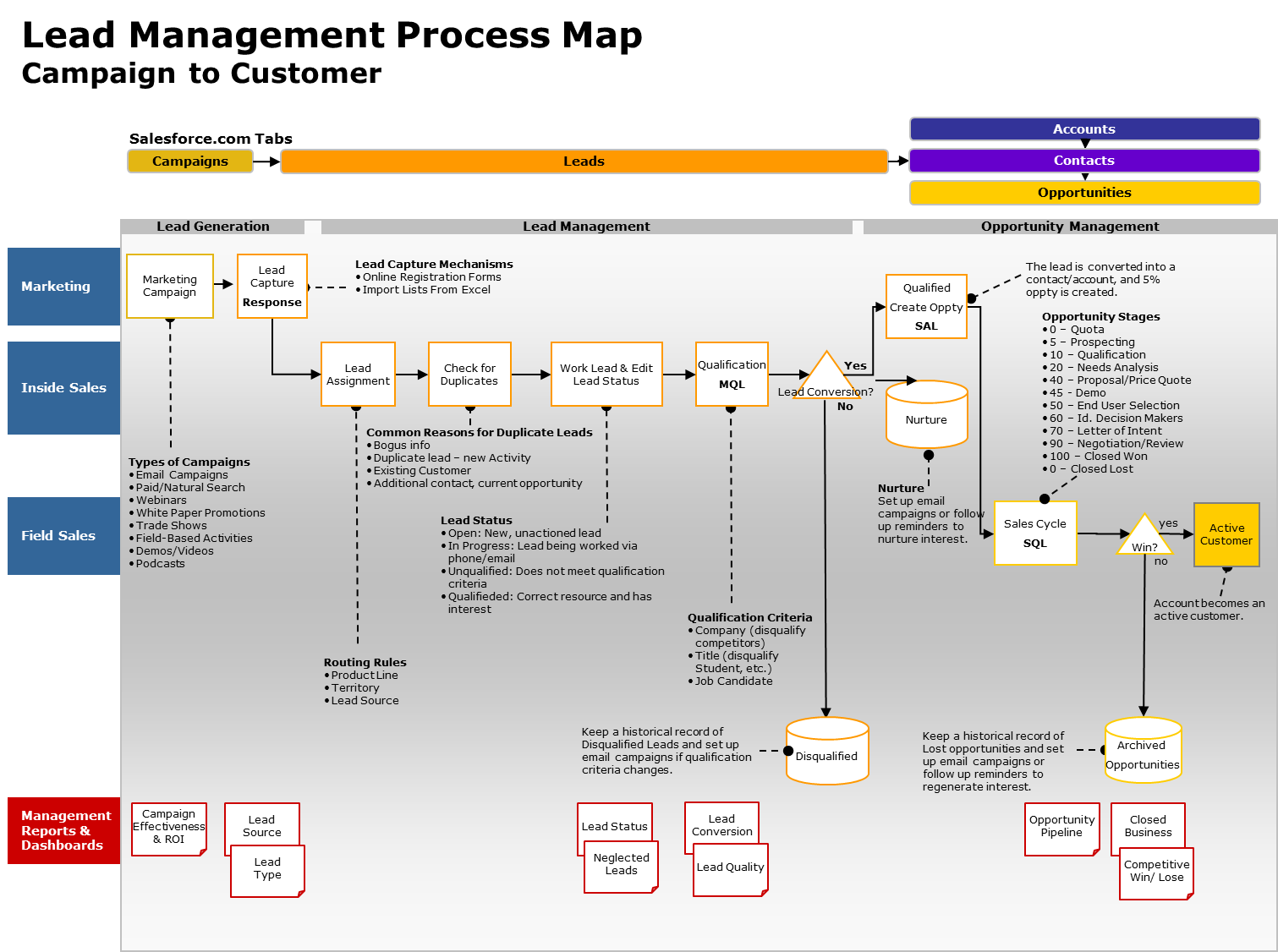My husband recently started a new job as director of sales operations for a start-up company. The company has been working on refining its lead management process, and he’s been pulled in to help figure it out. And so have I — indirectly.
One of our favorite topics of after dinner discussion over the last week has been about lead management. And while this topic is top of mind for me, I thought I’d share some thoughts on this important process.
If you’re a marketer at a B2B company, you can’t afford to have a hastily put together lead management strategy. The return on your marketing investment depends on how well you set-up your demand gen machine.
First off, you need to reach out to Sales as mapping your lead management process should be a joint effort. Sales needs to buy in to the process and be committed to its success. The four areas to focus on are:
- Definitions of a lead, qualified lead, and disqualified lead.You need to paint a picture of what your ideal lead (target company and target contact) looks like. Should you disqualify leads based on geography, industry, company size or contact title? You should have a disqualification reason for bad data, and figure out what constitutes bad data for your organization. Do you need to have phone and/or email to reasonably follow-up on the lead? Do you need title, address, etc.?
- Lead hand-off to Sales.What’s your definition of a sales-ready lead? Do all leads get forwarded to Sales? Do only certain leads get sent directly to Sales if they meet criteria and the rest go to nurturing?
- Lead assignment. This goes a step further from when to hand-off a lead to Sales. Now you need to determine who in Sales is going to work the lead. Does your organization have inside and outside sales teams? It’s common for an inside sales team to follow-up on leads and try to set meetings for their outside rep. But maybe there is a certain class of lead — a sales contact request from your web site, for example, that is considered to be the hottest lead and you want to get it directly to the outside rep for immediate follow-up. You need to think through the types of campaigns you run and which types of leads are most valuable and determine who to route them to on your sales team.
- Map the process. The end goal in determining your lead process should be to map it out clearly so that you can use it as a blueprint for setting up your CRM system.

This sales process map is a great way to put the process on paper. Thanks to Salesforce.com for providing it on their Successforce.com site. Feel free to download it and use it for your team.
I’ll share more ideas on how to implement this process in your CRM in subsequent posts.
